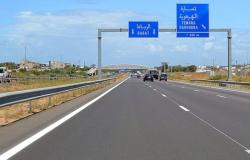How much mineral water do you store at home? This is how you calculate your personal emergency supplies now
In order to have enough to drink and eat even in times of crisis, the federal government also appeals to people to take personal responsibility. You should have these supplies ready.
What Mr. and Mrs. Swiss should have on hand as emergency supplies can now be put together using an online calculator.
Screenshot: notvorratsrechner.bwl.admin.ch
Since Russia’s attack on neighboring Ukraine a good two and a half years ago, the question has suddenly become more important again. Since then, not only warnings about energy shortages and blackouts have been circulating. As a result of war and crises, there are also fears that there will be shortages of food supplies.
Switzerland has had a patent recipe for years to ensure that plates and cups do not remain empty even in the worst case scenario: mandatory storage. But personal responsibility is also very important in this country. The patent recipe for this: emergency supplies.
On Tuesday, the federal government, together with retailers, launched a new campaign with which Mr. and Mrs. Swiss can prepare for unexpected situations. Using an emergency supply calculator, those interested can have an individual shopping list drawn up for themselves and their loved ones on how to stock up on supplies in their own four walls. For a family of four, the federal government recommends, among other things, the following for a week:
- 47 bottles of mineral water of 1.5 liters each
- 3 kilograms of coffee
- 10 packs of pasta, each 500 grams
- 21 canned vegetables of 300 grams each
- 7 packs of ready-made soups or bouillon, each 200 grams
- 12 packs of ready meals such as hash browns
- 14 canned beans of 400 grams each
These are just a few of the products that appear on the federal government’s detailed list. There are also technical items such as flashlights, power banks, hygiene products or medication. “The emergency supply is a simple and very effective measure in the event of a crisis,” writes the responsible Federal Office for National Economic Supply. This could ensure a few days of supply independence. “It is a contribution that each and every individual can make to overcome challenging times.”
Former army chief Blattmann’s tip
Personal emergency supplies were last a big topic ten years ago. At that time, army chief André Blattmann called on citizens in “Switzerland on Sunday” to stockpile liters of non-carbonated mineral water at home. He also has a water cistern and a fireplace with wood because the heating would no longer work in the event of a blackout.
Blattmann argued at the time: “Perhaps you should tell people: It’s good if you have a few supplies at home in case of an emergency.” The army chief has previously analyzed that our society has become vulnerable and that we are not really prepared for new risks.
After the outbreak of the war in Ukraine, the current army chief renewed his predecessor’s recommendation for emergency supplies. Specifically, Thomas Süssli recommended having food and drink ready for five days. The head of the army said he had enough food and drinks ready, as well as a camping stove and firewood for the fireplace.
Emergency supplies are a reserve of food and water that can be used to bridge longer emergencies. Accordingly, the duration of one week is entered as standard in the federal government’s new emergency supply calculator. However, this can be shortened independently or extended up to two weeks.
Nine pages of federal shopping list
There are also further options for personalization: In addition to the number of adults/children, intolerances can also be noted or preferences (meat consumption/vegetarian) can be entered. However, vegan is not an option to choose from.
At the end, the emergency supply calculator spits out a nine-page shopping list in the form of a PDF file. It also contains further general tips on how to behave in times of crisis. However, not all quantities are adapted to the number of people, which sometimes leads to strange recommendations.
In addition to emergency supplies, mandatory camps also have a long tradition in Switzerland. As early as 1912, the Federal Council had small grain reserves set up for the civilian population, as the Swiss Historical Lexicon says. Nevertheless, there were serious supply gaps during the First World War. Decades later, the federal government expanded the system of compulsory camps. Last but not least, the now failed Swiss high seas fleet once served the purpose of secure national supplies.
SRF Friday magazine from October 26, 1962: Survey with customers in a grocery store. (Source: SRF archive)
To this day there are ongoing discussions about the design of the compulsory camps – and whether they are still appropriate. Currently, these discussions are mostly about medicines because their international supply chains are interrupted. Or, as a result of the war in Ukraine, for example over grain and energy.
During the Cold War, the slogan “Smart advice – emergency supplies” was used to advertise household supplies. The authorities recommended at the time that the “iron structure” should last for at least two months. There is now also a calculator for personalizing emergency supplies.






